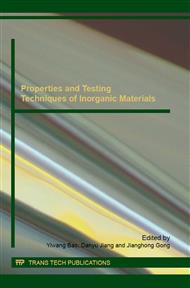p.406
p.411
p.420
p.429
p.435
p.439
p.447
p.451
p.455
Effect of F-S Mineralizer on the Calcination of Recycled Cement Clinker Produced from Waste Concrete
Abstract:
The recycled cement production, utilizing all components of the waste concrete without separation treatment as raw materials, provides an effective method for the high value-added resource recovery of waste concrete. However, as fine aggregate (sand) is the main siliceous component in the recycled cement raw materials prepared from waste concrete, its excessive high-crystalline silica content negatively impacts the burnability of raw meal and the property of clinker. By comparing and analyzing the results of burnability test, XRD patterns of clinker and compression strengths of cement paste, this paper attempts to explore the effect of F-S mineralizer on the calcination of recycled cement clinker produced from waste concrete. It could be concluded that F-S mineralizer has a significant improvement on the burnability of recycled cement raw meal, and the f-CaO content decreases with the mineralizer dosage rising. Moreover, in the case of calcination temperature at 1350°C, F-S mineralizer contributes to the enhancement of compression strength of recycled cement paste. Early high-strength minerals ( and C11A7⋅CaF2) are prime motivator to early strength increment, while long-term strength benefits from mineralizer’s improving on hydration activity of silicate mineral in clinker.
Info:
Periodical:
Pages:
435-438
Citation:
Online since:
February 2016
Authors:
Keywords:
Price:
Сopyright:
© 2016 Trans Tech Publications Ltd. All Rights Reserved
Share:
Citation:


